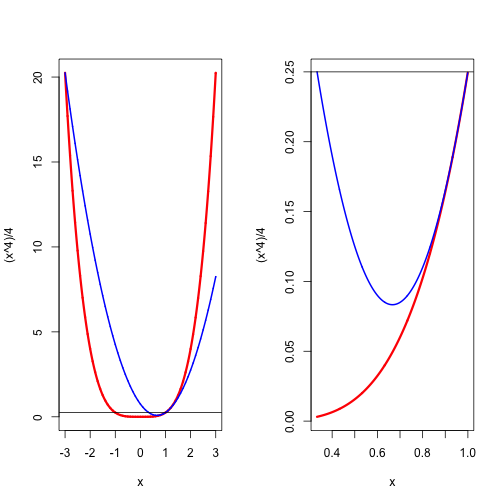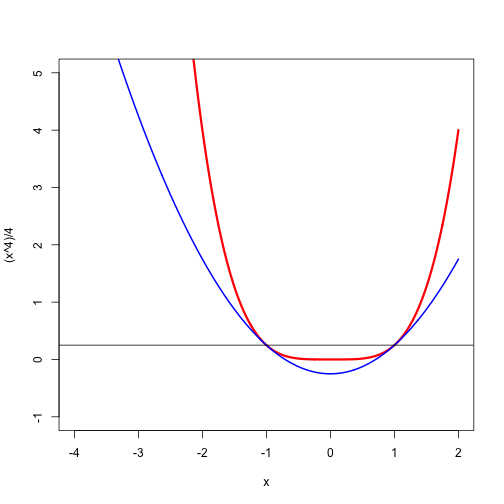Dinkelbach Majorization
In S-majorization we make sure the sandwich inequality remains true by requiring that An alternative requirement, that also leads to a sandwich inequality, is or, in iteration terms, If then .
Suppose is a real-valued function on and is a real-valued function on . We say that Dinkelbach majorizes on if
- if then for all ,
- for all .
Dinkelbach Majorization is strict if the first condition can be replaced by
- if then for all .
The D here stands for Dinkelbach, who proposed a forerunner of D majorization in a classic fractional programming article [Dinkelbach [1967]]. In S-majorization we require that majorizes on the sublevel set In D-majorization we require that attains its maximum on the sublevel set at .
Suppose is a fractional function of the form with for . Then D-majorizes on .
Clearly Moreover can be written as which implies .
Suppose with . Now if and only if Or must be in the interval between and . For a cubic we require that for all in the interval between and .
Suppose is increasing and differentiable. We have for all . Thus for any we have and consequently . In other words: an increasing function is Dinkelbach majorized by any convex quadratic.
Consider with and let us majorize at by a convex quadratic which has both and It follows that for some . Note that if we would also require that then we need
If we compute we find Majorization at would mean for all , which is clearly impossible because will be negative for very large and very small.
We have if and only if .The quadratic can only be non-positive if it has two real roots, which happens if , and then is non-positive between its two real roots, which are and
The sublevel set is the interval . For S-majorization we need for all , which means that interval must be a subset of interval Thus we must have as well as The first inequality gives , the second one . Thus we have S-majorization at if and only if . Figure 1 shows the S-majorization with , first globally, and then in closeup with on the horizontal axis. Note that the S-majorizer is certainly not a majorizer. Also note that actually makes , which means the quadratic S-majorizer is the quadratic approximation used in Newton's method.

For D-majorization we need for all which is the case if , i.e. D-majorizes at if and only if In figure 2 we see that a D-majorizer can actually be a minorizer ! Of course the S-majorization in figure 1 is also a D-majorization.
